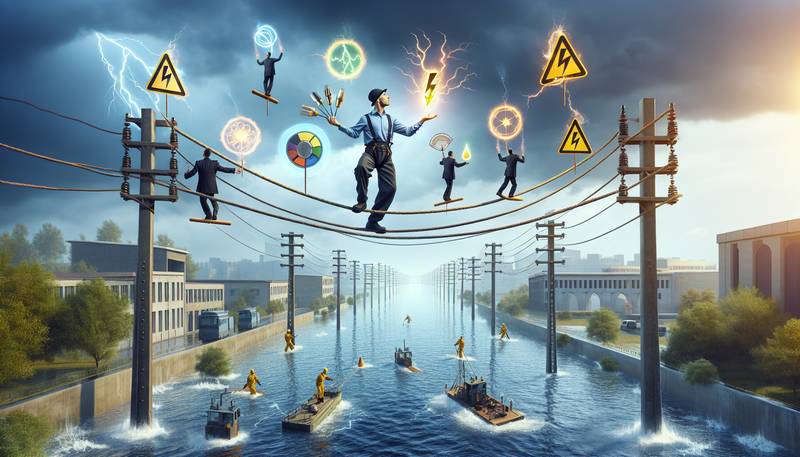Electrical Work Protocols in Flood-Prone Zones: A Safety Guide

Understanding the RisksWhen you think about it, working with electricity in a flood-prone area is a bit like trying to juggle chainsaws while riding a unicycle. There’s a fine line between daring and downright reckless. Floods can turn your average electrical system into a high-stakes game of chance, where the house always wins (and not in your favor). Water and electricity don't mix, much like oil and water, or socks and sandals. The main risk here is electrocution, a hazard that certainly doesn’t make anyone’s list of favorite pastimes. Being cautious isn’t just smart; it’s necessary. The Importance of PreparationPreparation is key when it comes to electrical work in flood-prone areas. It’s similar to preparing for a first date; you wouldn’t show up without knowing a little about your date (especially if they have an aversion to pineapple on pizza). Here are a few essentials to consider:- Conduct a thorough risk assessment. After all, recognizing the potential for flood-related electrical issues is like spotting a bad haircut before it’s too late.
- Ensure all electrical systems are up to code. Think of this as the equivalent of wearing clean underwear; it’s just good practice.
- Install ground-fault circuit interrupters (GFCIs). They’re the life jackets of the electrical world, ensuring that if something goes awry, you won’t sink like the Titanic.
Choosing the Right EquipmentChoosing the right equipment for electrical work in flood-prone areas is critical. Just like you wouldn’t wear flip-flops to a marathon, you shouldn’t use subpar tools for electrical tasks. Consider investing in the following:- Waterproof circuit breakers. They keep the electricity flowing smoothly, even if water tries to crash the party.
- Sealed electrical panels. These are like the bouncers for your electrical system, ensuring that only the right components get in.
- Flexible conduit. It’s the yoga instructor of electrical work, able to bend and adapt while remaining functional.
Safety Precautions to ImplementSafety is not merely a suggestion; it’s the law—much like wearing pants in public. Before diving into any work, it’s essential to adopt specific precautions that’ll keep your toes dry and your skin intact.First, always turn off the power before starting any work. This isn’t just common sense; it’s electrical work 101. The last thing you want is to surprise yourself with a little jolt, unless that’s your idea of fun, in which case, we should talk about your hobbies.Next, consider using insulated tools. They’re like wearing a rubber suit while handling electric eels—just safer. And if a flood warning is issued, it’s best to postpone any electrical work. Trust us; your circuits will thank you. Assessing Damage After a FloodOnce the waters recede, it’s time to assess the damage. Unfortunately, this isn’t a game of “find the hidden object” where a flood makes your electrical system magically better. Here's how to evaluate the situation:- Inspect all wiring for signs of water damage. Look for corrosion or any signs that your wires have been swimming without permission.
- Check appliances for water exposure. If your toaster looks like it just had an impromptu vacation in Lake Whatever, it’s time for a serious chat.
- Hire a licensed electrician for a thorough inspection. They’re the professionals—think of them as the lifeguards of electrical safety.
Safety Protocols to FollowEstablishing safety protocols isn’t just for fire drills; it’s crucial for electrical work as well. These protocols can be the difference between a safe experience and a shocking one.Some best practices include:- Regular training for all personnel. This is akin to teaching your cat not to claw the furniture—ensuring everyone knows what to do can avoid disaster.
- Clear signage about water hazards. Imagine bright neon signs that scream, 'Danger: Electricity Ahead!'
- Emergency response plans in place. Think of this as your electrical safety lifebuoy, ready to be thrown at a moment’s notice.
Bright Ideas for the FutureElectrical work in flood-prone areas doesn’t have to be an adventure in mayhem. With the right preparations, equipment, and protocols, it’s possible to keep both your circuits powered and your sanity intact. So next time you’re knee-deep in electrical planning, remember: it’s always better to be safe than sorry—and a little humor never hurt anyone, especially when working with the shocking realities of electricity!
|
|







